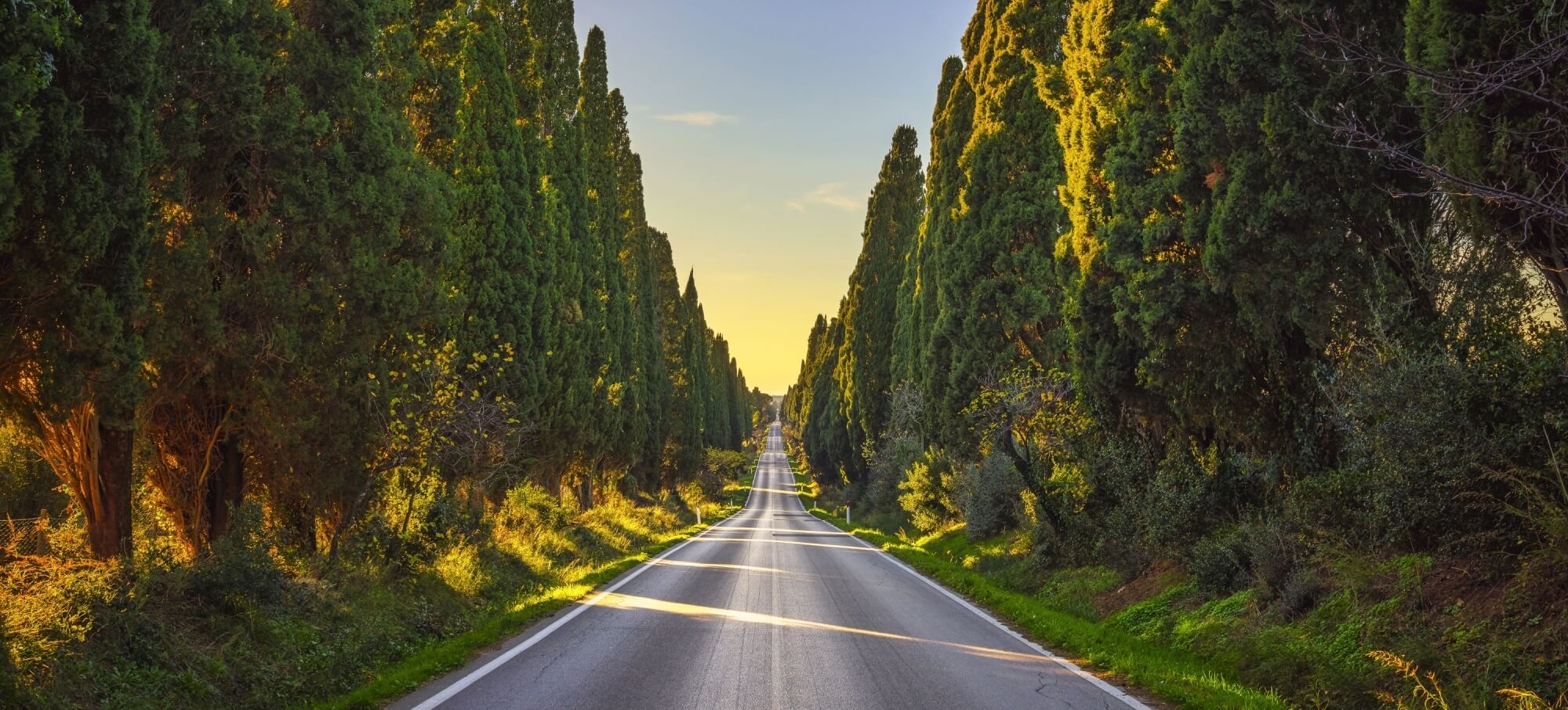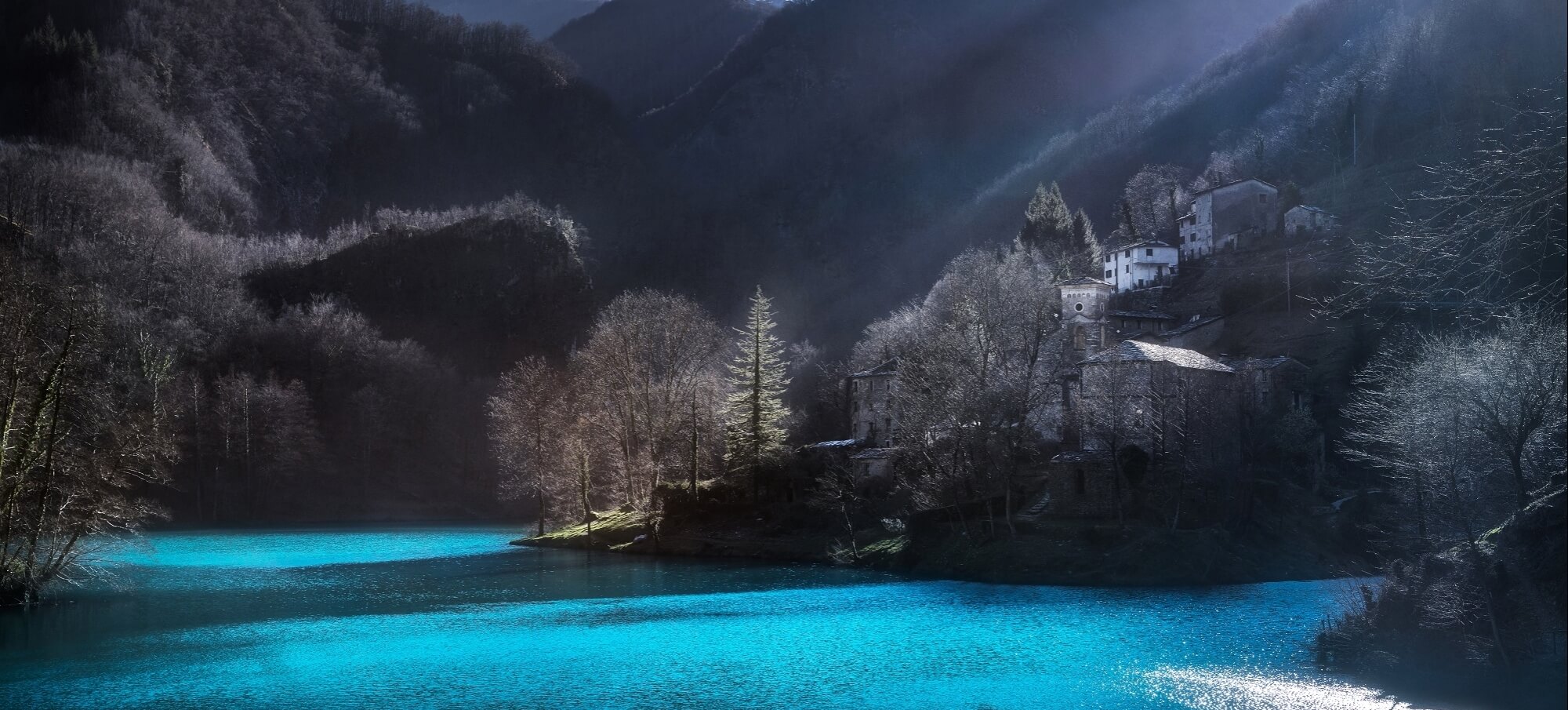From Piedmont to Tuscany with love
Shape your way through northern and central Italy

Italy is a living kaleidoscope of cultures and traditions, where the magic lies in discovering the attractions and charming surprises hidden everywhere. And we mean everywhere. Piedmont is famous for its cultural heritage - Turin is a triumph of baroque, lavish palaces and unique art museums, for being a temple of delicious food and the soil that yields some of Italy’s most renowned wines –does Barolo ring a bell? – Come to the southern part of the region, however, for a triumph of unexpected revelations.
Then travel further south to Tuscany: quintessentially idyllic, beyond the enchanting rolling hills and Renaissance superstars lies a realm of extraordinary gems that are a gentle invitation to discover hidden corners. Rugged mountains shape northwestern Tuscany and elegant, glitzy seaside resorts echo in the distance, combining influences from both areas, bringing testimonies of a proud, rich heritage that awaits your discovery.

1. Though a wine glass: Monferrato and its heritage
What’s in a name? are the initial words of a famous Shakespeare sonnet. Names and words do play a role in the magic land that is Italy, their sound music to most people’s ears, with Monferrato ranking high in people’s imagination. Together with Langhe and Roero, the area has been part of the UNESCO World Heritage since 2014. The reasons lie in their ethereal, gentle beauty, with lovely hills and scenic vineyards creating a picture-postcard backdrop, combined with an authentic wine culture. You may say that wine is produced everywhere in Italy with excellent results – fair enough, this is true! – and yet Piedmont’s connections with viticulture goes back to antiquity.
The Greeks were allegedly the first to introduce wine in the region, with Pliny the Elder mentioning wine being produced here in his Naturalis Historia (1st c. AD) Wine is indeed a cultural affair in Piedmont CLICK HERE and touring this supreme wine region is a year-round joy. Raise a toast to Piemonte!
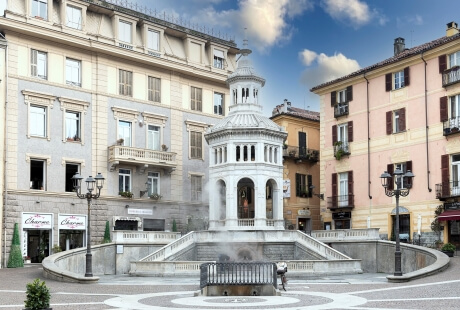
2. A city of water, Acqui Terme
All roads lead to Rome, they say, and the Romans left marks of their immense culture in many places across the Western world. Acqui Terme is no exception, with an impressive series of Roman ruins being seen in town and its surroundings. Excavations carried out in the late 20th c. revealed layer upon layer of hidden marvels, like a perfectly conserved Roman fountain in the centre of town, a Roman theatre, an imposing Roman aqueduct – with several arches still standing – ruins of a ceramics workshop and ruins of a large spa complex with a hot water pool – what was known as a calidarium.
The Romans already exploited what is now a prime spa complex, the Terme di Acqui, one of the most renowned in the whole of Italy. Water has always played a major role here: make the most of all the excellent treatments on offer for a superb stay. And don’t forget the local delicacies – we are in foodie Piedmont, after all. Mushrooms and chestnuts, prized truffles, filetto baciato salami, Robiola di Roccaverano DOP cheese and then delicious amaretti di Acqui sweets or velvety nougat - torrone. Enjoy it all with a local red DOC wine like Barbera del Monferrato, Dolcetto di Acqui and Freisa. Brachetto di Acqui DOCG sweet wine stems from this region only and accompanies every exciting event.

3. Buried treasures – Canelli and the Infernot in Cella Monte
Sitting in the south-eastern part of the region and bordering Liguria, this area combines influences from the mountains and the not-so-distant sea. A sparkling combination that makes every visit a ride through the past of a proud region.
Digging deep in the local history, in fact, we discover that the sea actually once covered this area. We are talking about several millions of years ago and when visiting enticing hamlets like Cella Monte, by Alessandria, you will see that small fossil shells crop up from the local houses. They are in fact built with pietra da cantoni stone. Softly coloured, this pale yellow stone bestows the town a seaside feeling that makes it special. The soil yielding such special stones means the terrain was ideal for the creation of the so-called Infernot, that is cellars dug directly into the rock. The town is replete with several examples and they all form the UNESCO Monferrato and Langhe- Roero heritage. No one is alike and exploring them is a must. Pair a visit with the Underground Cathedrals in Canelli for a unique experience. A marvel of engineering, they create a parallel city that is equally imposing and evocative: imagine 20 km of tunnels and rooms that go as deep as 40 metres! That’s where you will find a good selection of Asti Spumante bottles: kept at a constant 12° – 14°C temperature range, the bottles are almost cocooned to obtain the perfect sparkling wine. Wine connoisseurs, do not miss this magical place!
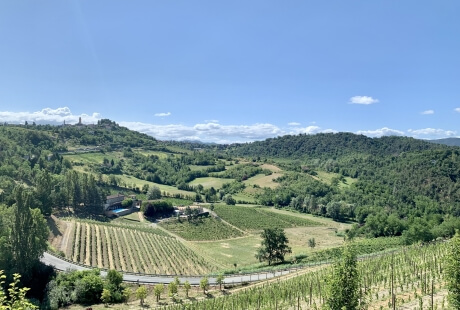
4. A land of castles
Piedmont is a triumph of cultural gems throughout, with momentous museums, regal palaces, superb churches and cathedrals. It is also famous for its many castles, southern Piedmont offering quite a selection. Being along the major thoroughfares from Italy to northern countries, and the area being inhabited by various lords and statesmen over time, several castles and mansions still dot this area. Some of them have been turned into historic residencies, with visits to their cellars offering an insight into the local’s love affair with vino. Gabiano Castle, by Casale Monferrato, was already mentioned in the 8th c. and hosts a unique maze; Sannazzaro di Giarole Castle dates back to the 13th c. and a visit will show its several exquisite rooms, the Church of Saint James and the English style gardens. Built in the 13th c., Uviglie Castle hosts several frescoed rooms and a historic cellar. Its centuries-old garden is part of the Historic Gardens of Piedmont. Perched on a small mound, Cremolino Castle (11th c.) crowns the medieval borgo of the small hamlet by Alessandria that also includes a convent and a parish church. Trisobbio Castle, by Acqui Terme, dates back to the 13th c. and the view from its tower is spectacular. Travelling across the region, you will see that so many other castles exist, as a testimony to the historic power that pervaded through the area.
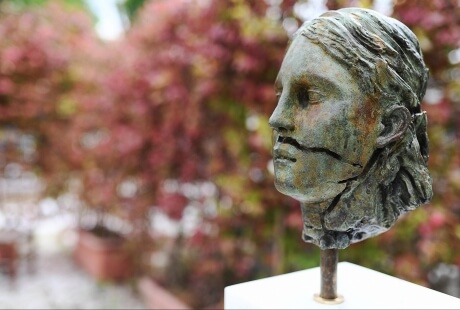
5. Moving south - Beyond the leaning tower of Pisa
Travel south and - hey presto! – you are in spellbinding Tuscany. Carrara and its mesmerising marble quarries are an obvious, illuminating stop: here history speaks through the evocative medium of the world-famous poetry of marble. Close-by Pietrasanta is a haven for artists who found home in this lovely place between the mountains – the Apuan Alps – and the sea. Pisa is another major attraction: a picture with the leaning tower in the background is a must, but go beyond Campo dei Miracoli to discover other ecstatic treasures. The American artist Keith Haring spent some time in the city and his Tuttomondo mural (1989) on the side wall of Saint Anthony the Abbot’s church is the last one he carried out. Palazzo Blu recently held an exhibition dedicated to this visionary artist and the centre always hosts relevant retrospectives. Splendid Gothic Santa Maria della Spina church on the Lungarni is a lovely 13th c example of Pisan Gothic. Once hosting a thorn from the crown of Christ, it sits right on the Arno bank. And speaking of Lungarni, the Arno river – yes, the same one that flows through Florence! – shaped the life of this lively city, which dons its true soul on San Ranieri, the yearly feast celebrating the patron saint, taking place on 16th June. During the so-called Luminarie, all palaces along the river are lit with thousands of candles placed along their façades, with parties and fireworks making the event just unmissable. Put it in your diaries!
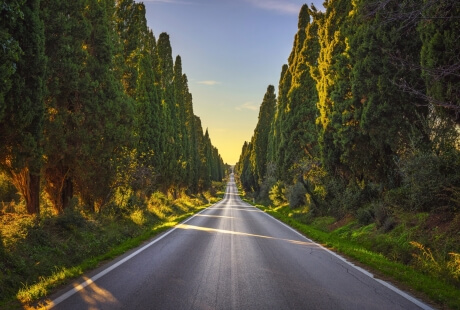
6. Volterra to Bolgheri
You certainly cannot get any more La Dolce Vita than driving through the Tuscan countryside, slowly discovering the realm of unbeatable beauties. Reaching Volterra is one such alluring pleasure: sitting on a hill and surrounded by medieval towers, the town is famous for its alabaster production and is an artwork itself. Walk along its medieval streets to capture its gentle aura, gaze at the lovely countryside from the Palazzo dei Priori terrace – the town hall dates back to 1208 and is the oldest in the whole of Tuscany. Discover works by Luca Signorelli, Domenico Ghirlandaio and Rosso Fiorentino in the nearby Pinacoteca and find out about Volterra’s Etruscan past in the Guarnacci Etruscan Museum, one of the richest in the entire peninsula. Proceed south and reach Bolgheri. Nobel prize winner Giosuè Carducci, an Italian 19th c. poet and writer, celebrated the famous 5 km-long Cypress alley leading to this town in his 1874 Davanti San Guido poem: an almost ethereal approach to what is a quaint, picturesque town. Bolgheri is also known as being the place of the first Super Tuscan wine, Sassicaia. Tastings are de rigueur here, as is visiting one of the famous wineries in town. You should also try Cantina Petra in Suvereto, designed by Italian architect Mario Botta and blending perfectly with the surrounding countryside. Tenuta Guado al Tasso of the Antinori family sits close-by and superb Bolgheri Doc Superiore and Rosso are produced and can be tasted in a lovely setting. Spectacularly located Tenuta Argentiera, by Castagneto Carducci, entails 75 hectares of vineyards that extend from gentle hills all the way to the sea. A staggering location for supremely joyful tastings of red, white and rosé wines that will accompany your journey of discovery. s

7. Secret Tuscany: Garfagnana, Lunigiana and on to the sea
To some people, the area in the northeast of Tuscany called Garfagnana may be the place where the poet Dante Alighieri spent some time in exile from Florence. This area is in fact packed with exciting parks, fortresses and castles: bordering the Apuan Alps and the Apennines, dense with chestnut woods and feeling the influence of the sea, you may visit Aghinolfi Castle in Montignoso, with its stunning floor decorations and brilliant shape, the Fosdinovo Malaspina Castle in the Lunigiana Area, where Dante Alighieri spent some time, and the Fortress in Verrucole. Monte Prado, Tuscany’s highest mountain at 2,054 m is here, while Monte Pisanino is the highest of the challenging, severe and wildly remote Apuan Alps, whose peaks are clearly visible from the entire Versilia Riviera.
The force of nature is predominant here, with the Parco dell’Orecchiella nature reserve, where eagles, wolfs and mouflons live, enriched by a superb botanic garden. Go further south and explore the Migliarino San Rossore and Massaciuccoli Regional Park: extending on to the sea, this park is ideal for walks and bike rides along evocative beech woods and sandy dunes in an unspoilt corner of exciting Tuscany.
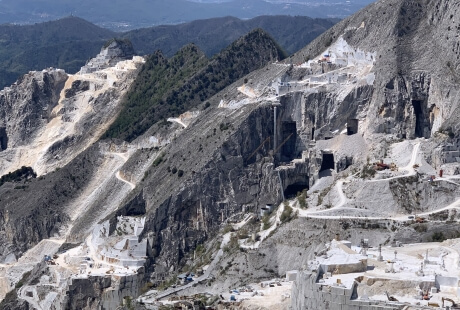
8. Marble Quarries
Driving through northern Tuscany, past the ethereal Cinque Terre and the Riviera di Levante in eastern Liguria, you know that the coast and the sea will accompany you along the journey. And yet, looking upwards, a white dash colouring the rugged, imposing mountains on the other side captures your attention: surely that cannot be snow, so close to the sea. It is, in fact, the white treasure that has captured the imagination of countless artists – and dreamers – the centuries through.
Marmo – marble – has fashioned the life of this distinct corner of Tuscany, seemingly endless rows of slabs being worked at the bottom of the valley, the poetry of this exceptional material happening higher up; there, the dust and the noise conjure up a special ballet that has captivated everyone, starting from the Romans, through to Michelangelo and all the way to Rodin, contemporary artists adding their special, innovative touch. A seemingly cold material, marble can speak to anyone sensible enough to listen to its lyrical potency: hard and heavy, but soft and gentle to the touch, marble embellishes, adorns and enriches our soul. Carrara itself is home to a stunning 188 quarries and you can experience a “hands-on” Cave di marmo tour of the quarries, to see where the poetry lies, or take up a cycling tour up to small Colonnata – home to the tasty, wafer-thin and delicious lardo di Colonnata – admiring the hard-working cavatori who spend their lives in a perilous job, yielding one of Italy’s most precious art treasures.
DOWNLOAD THE ITINERARY Piedmont and Northern Tuscany
Where to stay
All contents, photos and texts are subject to copyright. They are only authorised on my website and social media. Ideas can be a source of inspiration, but any unauthorised use of images and texts is strictly forbidden. All rights reserved.
